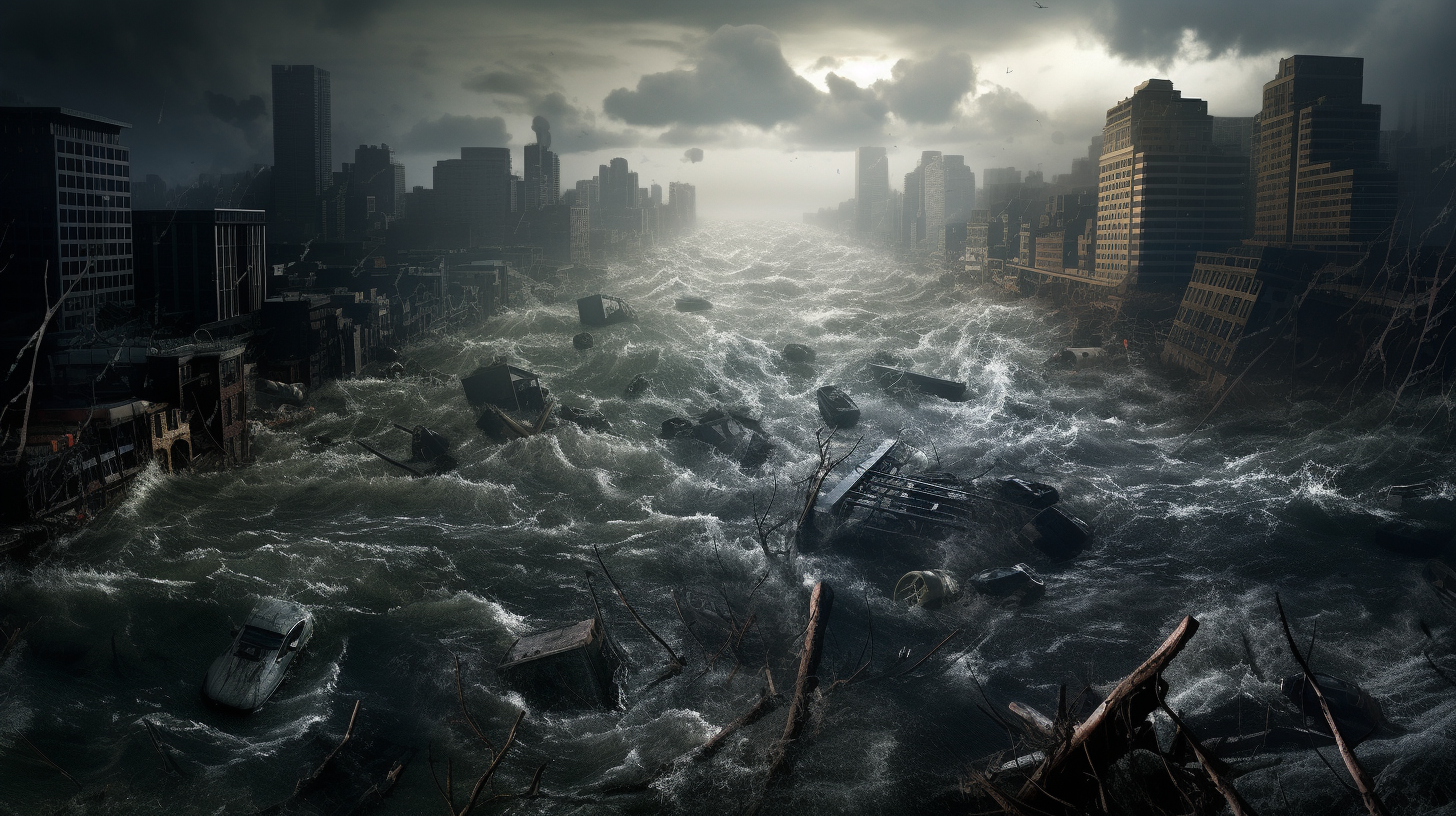Sucked into the Eye: The Maelstrom Cities
In a world ravaged by climate mayhem, urban centers stand as grim monuments to human ambition turned awry. Towering skyscrapers now play host to the wails of wind tunnels, while once-busy highways are choked by the relentless creep of desert sands. Our cities have transformed into vortices of climatic chaos, the eye of a maelstrom pulling at the frayed edges of civilization.
The concept of ‘urban heat islands’ once seen as a peripheral side effect of city living, has become a dire warning of what happens when concrete and steel absorb the wrath of the sun. Streets simmer under the phantom cloak of heat, conjuring mirages where the future once seemed clear.
Climate refugees swarm to these places, not for the promise they once held, but out of sheer necessity, their homes devoured by the relentless surge of sea level rise or ravaged by the insatiable appetite of wildfires. Yet, upon arrival, they find not solace but a churning maelstrom of survival, where water shortages, food scarcity, and air pollution dictate the pace of life.
The chronicles of these cities read like a cautionary tale of systems too interwoven to fail gracefully. Public transportation systems, designed for efficiency and swiftness, now stand crippled by constant storms and floods, their relics submerged in water or buried in debris. The irony of modernity’s disintegration is not lost on those who remember the days when time-saving machines and devices were seen as progress, rather than the shackles they have become.
And yet, amidst this chaos, humanity’s resilience flickers in the encroaching darkness. Makeshift communities have emerged, rudimentary systems ingeniously crafted from the bones of a once-thriving metropolis. Rooftop gardens creep across the skyline, a testament to survival in the face of environmental collapse. But is it enough?
The question lingers in every gust of toxic air, every failed harvest, and every new band of refugees: What comes next for the maelstrom cities? Can they be reinvented, reimagined, or are they destined to be cautionary tales for a civilization that failed to listen to the whispers of its own demise?
As the sun sets on yet another day of survival, the urban centers do not sleep. They can’t. The energy of desperation fuels them, their ceaseless hum a reminder of what once was and what could be again—if only the warnings had been heeded.
Into the Vortex: A Glimpse of Tomorrow
Ripped right from the pages of dystopian fiction, the concept of maelstrom cities has taken a tangible, disturbing form in our world. These are not mere literary devices or hyperboles; they are the living, breathing embodiments of our neglected warnings about environmental disaster. As much as they serve as a mirror to our past mistakes, they also project the shadow of our potential future—the irrevocable blending of urban landscapes with nature’s most violent tendencies.
The lessons of these cities, the heart of the maelstrom, are lessons of respect for the delicate balance that sustains us. They compel us to ask whether our relentless pursuit of growth was worth the cost—as we find ourselves clinging to the remnants of a society that flew too close to the sun with wings of fossil fuels and indifference.
In the iron grip of these vortices, we find not just the failures of our past, but the seeds of understanding for a path forward. If there is hope to be found, it lies in taking these lessons to heart and reimagining our relationship with the planet that continues to sustain us, despite our transgressions.
One thing is certain: the maelstrom cities are here, and they demand our attention. Not as spectacles or tourist curiosities, but as urgent reminders of the fate that awaits us if we do not change course. As the gales of change howl through the twisted canyons of glass and steel, one wonders—will we listen now?
